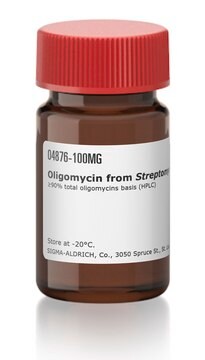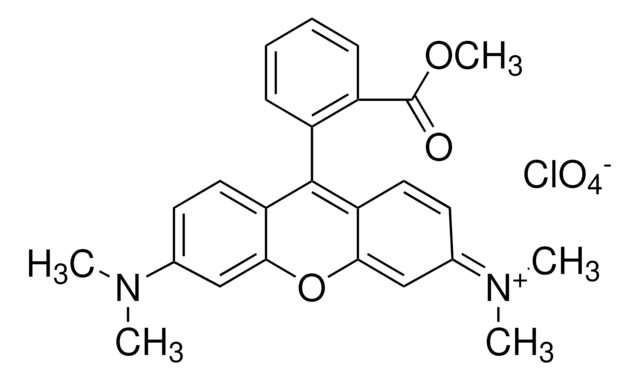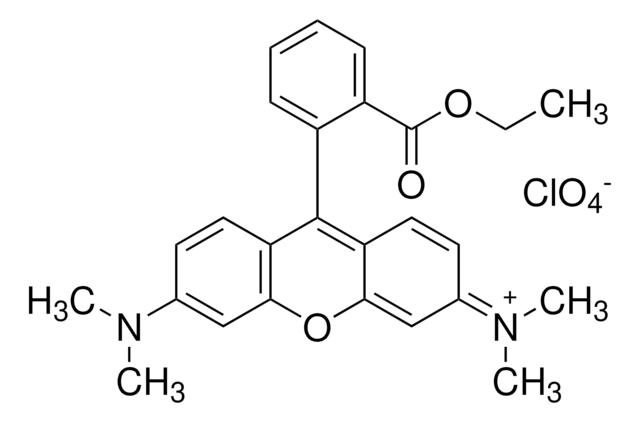C2920
Carbonyl cyanide 4-(trifluoromethoxy)phenylhydrazone
≥98% (TLC), powder, Mitophagy inducer
Synonym(s):
FCCP, Mesoxalonitrile 4-trifluoromethoxyphenylhydrazone
About This Item
Recommended Products
product name
Carbonyl cyanide 4-(trifluoromethoxy)phenylhydrazone, ≥98% (TLC), powder
Quality Level
Assay
≥98% (TLC)
form
powder
color
yellow
mp
174-175 °C (dec.) (lit.)
solubility
95% ethanol: soluble
storage temp.
2-8°C
SMILES string
FC(F)(F)Oc1ccc(N\N=C(/C#N)C#N)cc1
InChI
1S/C10H5F3N4O/c11-10(12,13)18-9-3-1-7(2-4-9)16-17-8(5-14)6-15/h1-4,16H
InChI key
BMZRVOVNUMQTIN-UHFFFAOYSA-N
Looking for similar products? Visit Product Comparison Guide
General description
Application
Signal Word
Danger
Hazard Statements
Precautionary Statements
Hazard Classifications
Acute Tox. 4 Oral - Aquatic Chronic 4 - Eye Dam. 1 - Skin Corr. 1B - Skin Sens. 1
Storage Class Code
6.1A - Combustible acute toxic Cat. 1 and 2 / very toxic hazardous materials
WGK
WGK 3
Flash Point(F)
Not applicable
Flash Point(C)
Not applicable
Personal Protective Equipment
Certificates of Analysis (COA)
Search for Certificates of Analysis (COA) by entering the products Lot/Batch Number. Lot and Batch Numbers can be found on a product’s label following the words ‘Lot’ or ‘Batch’.
Already Own This Product?
Find documentation for the products that you have recently purchased in the Document Library.
Customers Also Viewed
Related Content
DISCOVER Bioactive Small Molecules for Nitric Oxide & Cell Stress Research
Our team of scientists has experience in all areas of research including Life Science, Material Science, Chemical Synthesis, Chromatography, Analytical and many others.
Contact Technical Service










